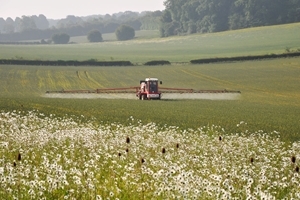Dr Alastair Leake, Director of Policy and Public Affairs
 The development of synthetic nitrogen fertilisers enabled farmers to increase yields by shortening rotations and supplying nutrients directly to the crop. From 1950-1990, UK wheat yields quadrupled from 2t/ha to over 8t/ha, but during the same period the farmland bird index dropped by over 40%. The global human population is currently growing at 210,000 people per day and is expected to reach 9 billion by 2050, whilst UK self-sufficiency has dropped from 78% to below 60%; food production will once again become a priority.
The development of synthetic nitrogen fertilisers enabled farmers to increase yields by shortening rotations and supplying nutrients directly to the crop. From 1950-1990, UK wheat yields quadrupled from 2t/ha to over 8t/ha, but during the same period the farmland bird index dropped by over 40%. The global human population is currently growing at 210,000 people per day and is expected to reach 9 billion by 2050, whilst UK self-sufficiency has dropped from 78% to below 60%; food production will once again become a priority.
The GWCT has been at the forefront of engineering biodiversity back into the food production system. The Trust has developed a suite of mitigation measures, many of which are now publically funded in agri-environment schemes. Attempts by the EU Commission and Parliament to reform the Common Agricultural Policy to include so-called “greening measures” are unlikely to be sufficient to make a difference to wildlife, so the protection of those species which have come to depend on farmland will fall to national policy makers and those working on the ground. Recognition that food production and delivery of biodiversity is already second nature to many farmers, and better training and collaborative working are demonstrating that greater outcomes can be achieved.